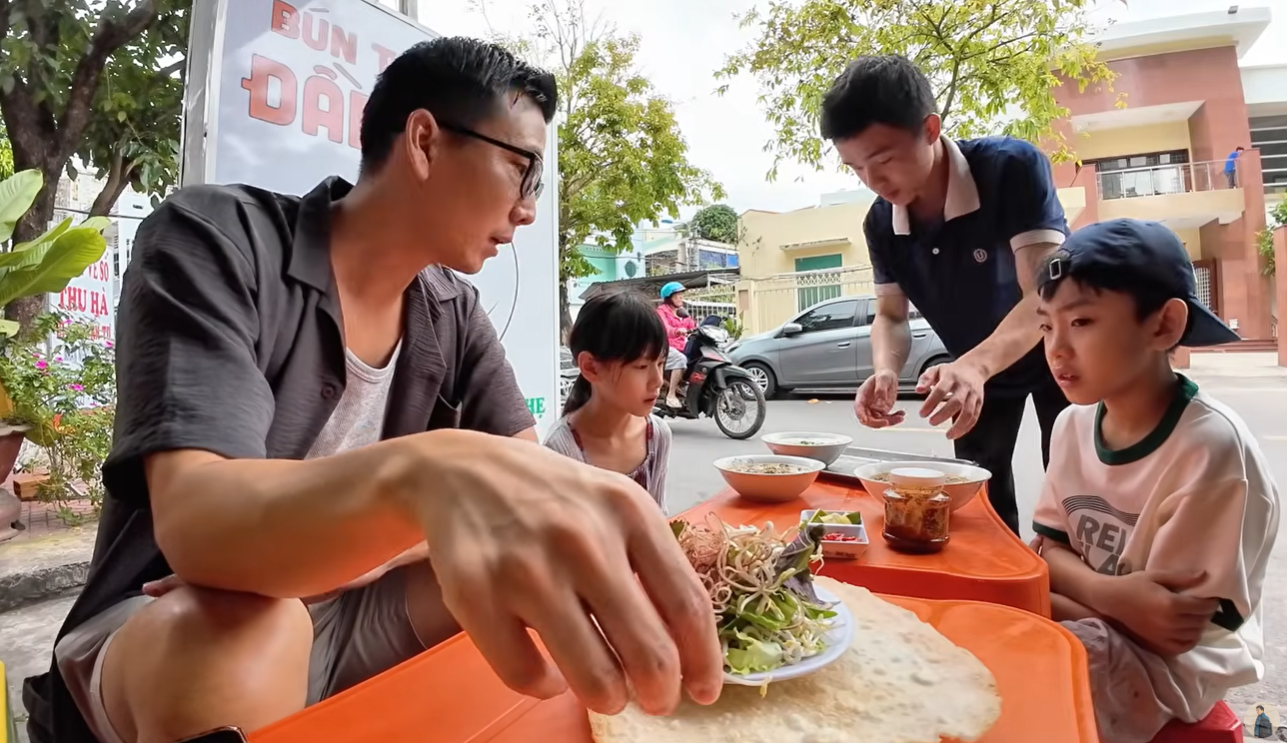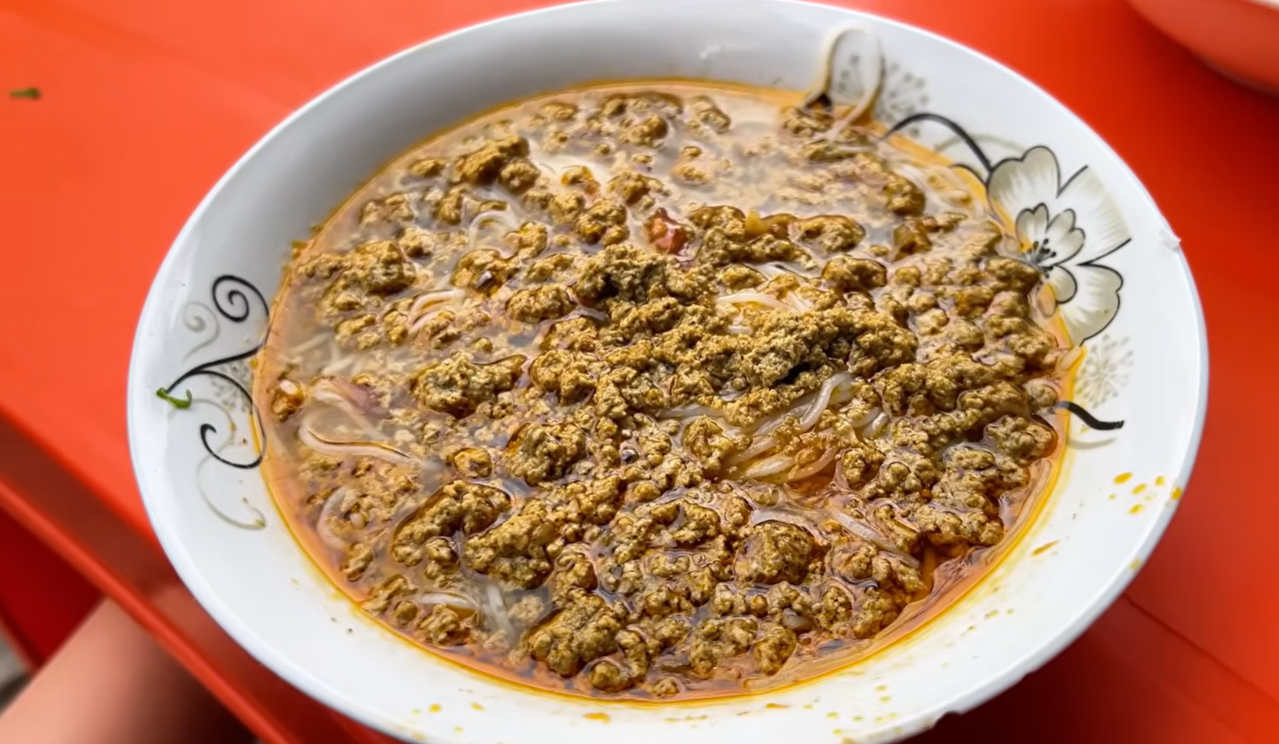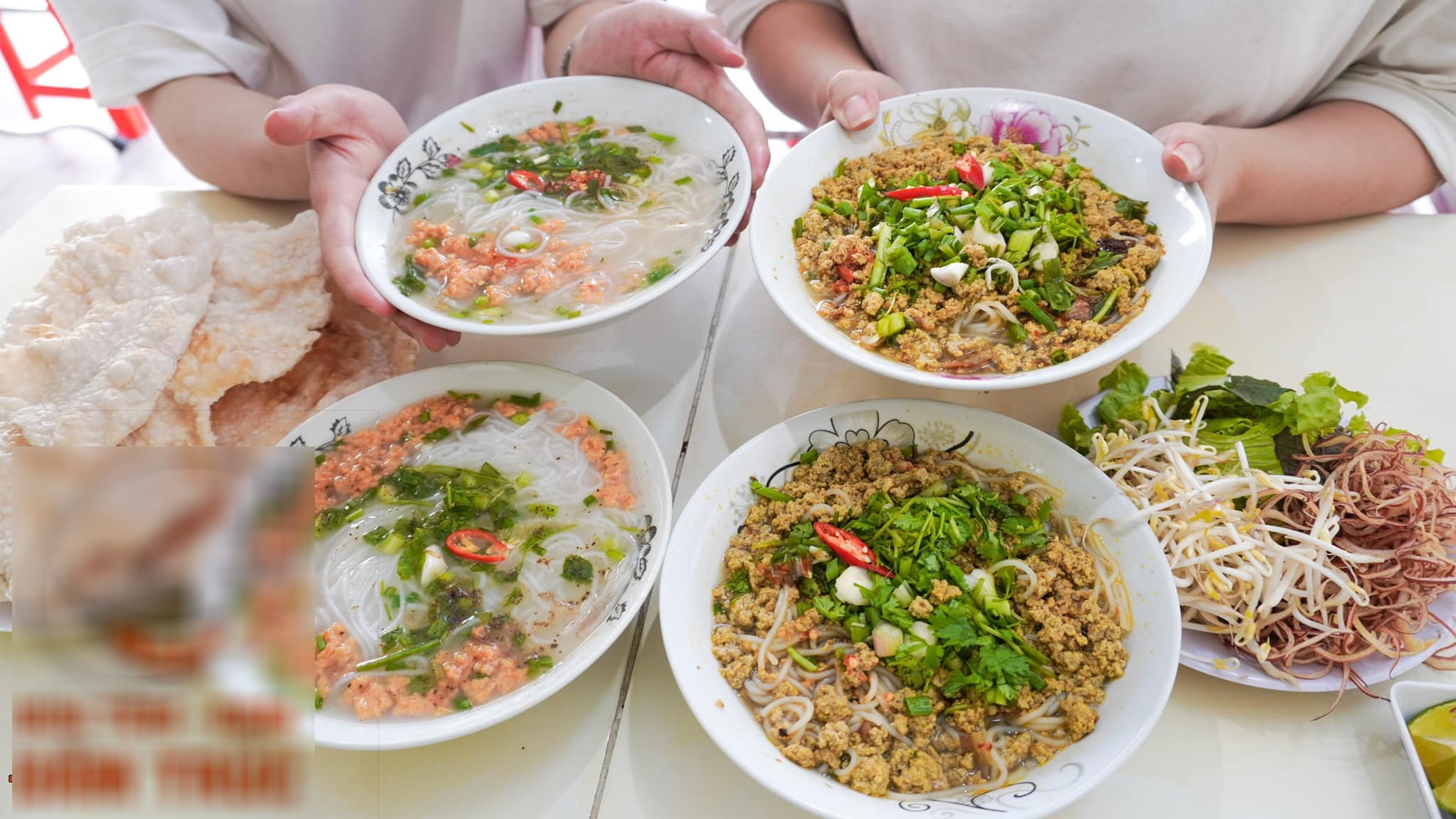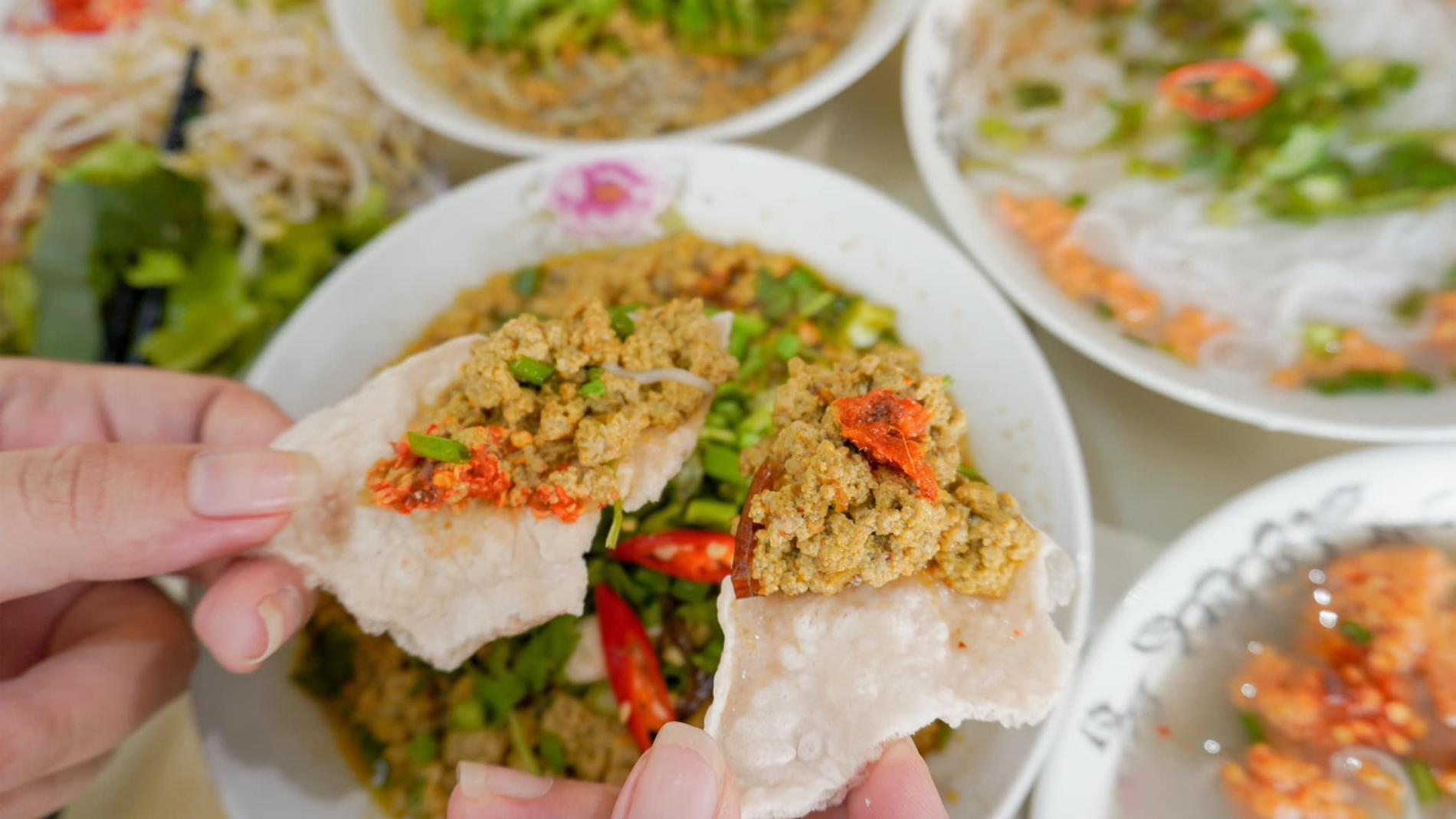A Japanese content creator was not only impressed by the flavors of Quy Nhon’s signature dishes but also surprised at how affordable they were: three bowls for only 54,000 VND (approximately $2.12).
 |
 |
Papaken, born in 1989, is a Japanese content creator who has been living in Hanoi for about three years. On his popular YouTube channel, which has hundreds of thousands of followers, he regularly shares videos about his travel and culinary experiences across Vietnam.
In a recent video documenting a trip to Quy Nhon with his two children, Papaken showcased a range of local specialties he had the chance to try, including banh xeo (Vietnamese pancakes) and goi ca trich (herring salad).
But it was the local dishes bun tom (shrimp noodle soup) and bun ram (field crab noodle soup) that truly impressed the Japanese father and his kids. All three raved about the flavors and wished these dishes were available in Hanoi.
They stopped by a modest street-side eatery on Tran An Tu Street in Quy Nhon City. Papaken ordered a bowl of bun tom while his children enjoyed bun ram.
When the dishes were served, Papaken was curious about the ingredients in bun ram, unsure if it contained meat or crab paste. "It looks delicious," he exclaimed.
 |
 |


Describing the bun tom, he noted that the broth had a thick, porridge-like texture with a mildly sweet flavor. The thin rice noodles used were just the kind he preferred.
“The broth is a bit like porridge, and the shrimp has a peppery taste, so it’s a little spicy. Personally, I found the flavor a bit light,” he said.
To enhance the taste, he added a bit of fish sauce, chili oil, pepper, and herbs, which he said significantly improved the flavor.
“After adjusting the seasoning, the bun tom tasted much better. Eating it with fresh herbs gave it a crunchy and refreshing texture. I could definitely eat two bowls,” Papaken said.
Papaken then tried the bun ram and found it fresh and flavorful, comparing the broth to Japanese ramen soup. He again wished he could find the dish in Hanoi.
Kaikun, Papaken’s son, preferred the bun ram after tasting both dishes, repeatedly saying “so delicious” and noting that the crab paste reminded him of bun rieu, another Vietnamese crab noodle soup he had tried before.
In addition to the rich flavors, Papaken was amazed by how affordable the dishes were. Each bowl cost only 17,000 VND (around $0.67), making the total for all three bowls just 54,000 VND. “The portions were modest but perfect for breakfast,” he said.
Speaking with the press, Mr. Huu Hoang, the eatery owner, explained that bun tom and bun ram are traditional dishes originating from the Tra O Lagoon (also known as Chau Truc Lagoon) in Phu My District, Binh Dinh Province. Over time, these dishes became more popular and are now served widely in Quy Nhon and surrounding areas.


According to Mr. Hoang, the main ingredients for both dishes are freshwater shrimp and small crabs caught in Tra O Lagoon. Preparation is simple, with few spices and minimal side dishes.
For bun tom, the cleaned shrimp are ground into a paste. When ordered, the paste is cooked in hot noodle broth, seasoned lightly with fish sauce and salt, and garnished with scallions and coriander.
“The freshness of the shrimp and the gentle sweetness of the noodle water are what make this dish so light and easy to enjoy,” he said.
Bun ram is prepared in a manner similar to bun rieu but simpler. The crabs are cleaned, ground, and filtered for broth, which is then boiled. It’s minimally seasoned to preserve the crab’s natural aroma and creamy richness.
At the eatery, bun ram is served with fresh herbs and rice crackers. Diners can season their bowl with fish sauce, chili oil, pepper, and other condiments as desired to match their personal tastes.
Thao Trinh